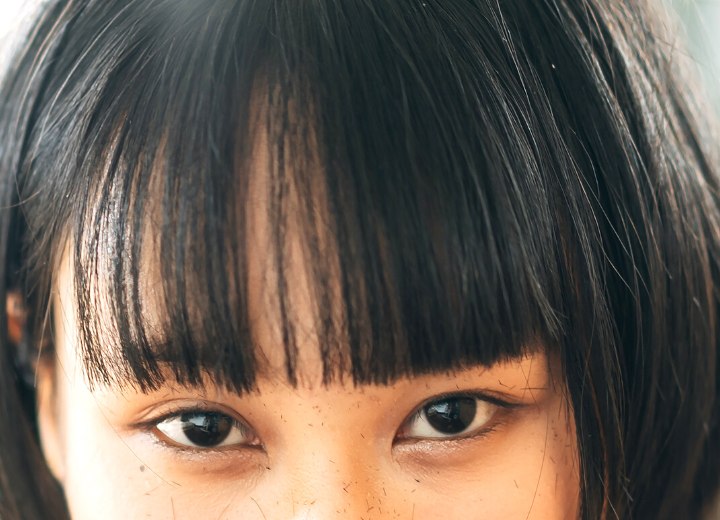How to Cut a Fringe (3)

Solutions:
When cutting a fringe (bangs) into fine hair, you want to again remove the hair in smaller increments. Start with a length approximately one to one and a half inches longer than you want for your final result, and see how the hair responds.
As you remove the hair in small amounts, you will hopefully find that it begins to bounce up and have some additional body. If this doesn't happen, stop your cuts at the point where you want the fringe to ultimately fall.
Fringe Styles and Problem Hair Traits
Often an individual will have hair traits (called growth patterns) that can make the creation of fringe styles problematic. The most common of these are cowlicks and hair streams. Everyone is likely familiar with the look of what we know as a cowlick. Named such because the old wives' tale accompanying the trait was that a cow licked a given child's head during his sleep, and that the cow's saliva - known to be very thick and sticky - permanently altered the way the hair grows.
Hair streams may be less known because they aren't always as readily visible in those who have them because they can appear within the body of the hair away from the front areas around the face. Even so, those that are present near the forehead can present unique difficulties in creating a style that incorporates a fringe – and indeed any hairstyle at all in many cases.

Dealing with cowlicks and hair streams follow the same principles. You must either be able to create a look that overcomes the growth patterns, or you have to find a way to use them to aesthetic advantage. This second option is often the better choice and the easier of the two to achieve.
For cowlicks, you can create a divided fringe with an angled cutting line that creates a pleasing, asymmetrical look in the fringe style. If the individual has wavy hair, often the fringe will create an "S" curl around the side of the cowlick and become a trait in the style that others want to emulate, but will be unable to since it requires the naturally-occurring growth pattern.
With hair streams, you may find that the hair suddenly seems determined to grow in one direction or the other at the front edge of the face. This means that you must either have the hair long enough to overcome the natural path or simply decide to use a side-swept fringe, which will more naturally direct itself as a result of the hair’s natural tendency.
If the hair stream seems to be intent on directing the hair straight forward along the top of the head, then you most likely need to use enough length in your bangs to allow the hair to fall and hang in a way that you or your client finds pleasing.
©Hairfinder.com